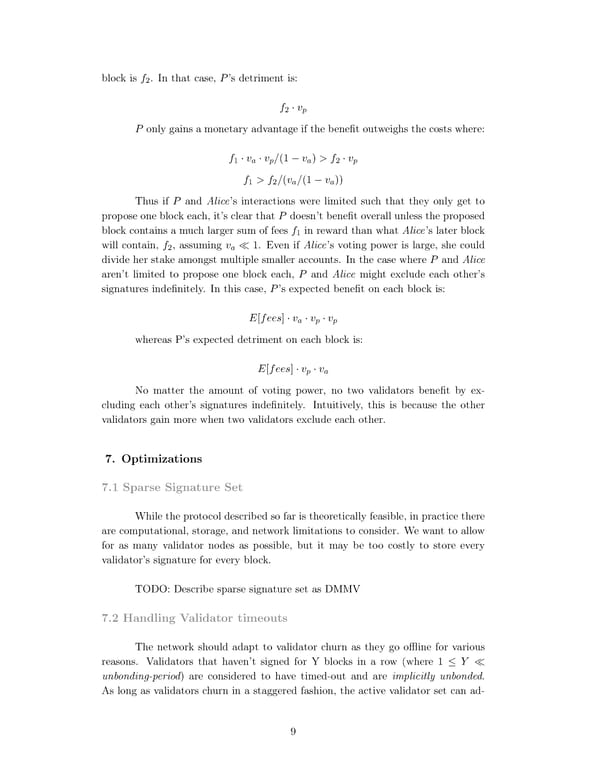block is f . In that case, P’s detriment is: 2 f ·v 2 p P only gains a monetary advantage if the benefit outweighs the costs where: f ·v ·v /(1−v ) > f ·v 1 a p a 2 p f >f /(v /(1−v )) 1 2 a a Thus if P and Alice’s interactions were limited such that they only get to propose one block each, it’s clear that P doesn’t benefit overall unless the proposed block contains a much larger sum of fees f1 in reward than what Alice’s later block will contain, f2, assuming va ≪ 1. Even if Alice’s voting power is large, she could divide her stake amongst multiple smaller accounts. In the case where P and Alice aren’t limited to propose one block each, P and Alice might exclude each other’s signatures indefinitely. In this case, P’s expected benefit on each block is: E[fees]·v ·v ·v a p p whereas P’s expected detriment on each block is: E[fees]·v ·v p a No matter the amount of voting power, no two validators benefit by ex- cluding each other’s signatures indefinitely. Intuitively, this is because the other validators gain more when two validators exclude each other. 7. Optimizations 7.1 Sparse Signature Set While the protocol described so far is theoretically feasible, in practice there are computational, storage, and network limitations to consider. We want to allow for as many validator nodes as possible, but it may be too costly to store every validator’s signature for every block. TODO: Describe sparse signature set as DMMV 7.2 Handling Validator timeouts The network should adapt to validator churn as they go offline for various reasons. Validators that haven’t signed for Y blocks in a row (where 1 ≤ Y ≪ unbonding-period) are considered to have timed-out and are implicitly unbonded. As long as validators churn in a staggered fashion, the active validator set can ad- 9
 Tendermint: Consensus without Mining Page 8 Page 10
Tendermint: Consensus without Mining Page 8 Page 10